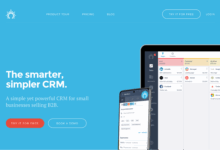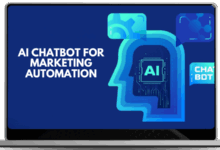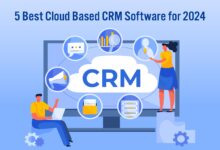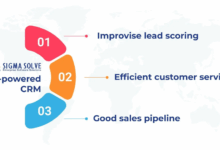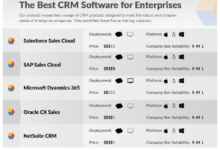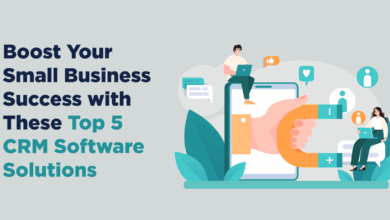Best CRM Software 2025: A Comprehensive Guide
Best CRM Software 2025 represents a pivotal moment in customer relationship management. The landscape is rapidly evolving, driven by advancements in artificial intelligence, cloud computing, and a growing emphasis on data privacy. This guide navigates the complexities of choosing the right CRM solution for your business needs, exploring key features, pricing models, and future trends shaping the industry. We’ll delve into the must-have functionalities of modern CRMs, compare leading platforms, and provide actionable insights to help you make an informed decision.
From understanding the various deployment options (cloud, on-premise, hybrid) to evaluating user experience and security protocols, we aim to provide a complete overview. We’ll also examine successful CRM implementation strategies and explore how these systems contribute to improved customer satisfaction and retention, ultimately driving business growth and profitability. This exploration will consider both traditional and AI-powered CRM functionalities, highlighting the advantages and disadvantages of each.
Introduction to CRM Software in 2025
The CRM landscape in 2025 is significantly different from its predecessors. No longer simply contact management systems, CRMs have evolved into sophisticated platforms integrating sales, marketing, and customer service functionalities, leveraging AI and machine learning to deliver hyper-personalized experiences and predictive analytics. This evolution is driven by increasing customer expectations for seamless omnichannel interactions and the need for businesses to extract maximum value from their customer data.
The key differentiators among leading CRM solutions in 2025 are not just features, but the depth of integration and the sophistication of their AI capabilities. Leading platforms offer robust automation capabilities, predictive lead scoring, advanced analytics dashboards providing actionable insights, and seamless integrations with other business applications, such as ERP and marketing automation systems. The focus is shifting towards providing a single source of truth for all customer interactions, empowering businesses with a holistic view of their customer base.
Key Features Differentiating Leading CRM Solutions
Leading CRM solutions in 2025 are distinguished by their ability to provide a unified view of the customer journey across all touchpoints. This includes features such as advanced workflow automation, predictive analytics powered by machine learning, and robust reporting and visualization tools. For example, a leading CRM might use AI to predict customer churn, allowing businesses to proactively address potential issues and retain valuable customers. Another key differentiator is the level of customization and integration offered. The best CRMs allow businesses to tailor the system to their specific needs and seamlessly integrate it with other business applications. This ensures a smooth workflow and avoids data silos.
Industries Benefiting Most from CRM Implementation
A wide range of industries are reaping substantial benefits from CRM implementation. However, some sectors see particularly significant advantages. For example, in the rapidly evolving financial services sector, CRM systems are crucial for managing client relationships, complying with regulatory requirements, and personalizing financial advice. Similarly, in the healthcare industry, CRM systems facilitate better patient management, appointment scheduling, and communication, leading to improved patient outcomes and operational efficiency. The retail sector also benefits significantly, leveraging CRM to personalize marketing campaigns, optimize inventory management, and enhance customer loyalty programs. These examples highlight the versatility and widespread applicability of modern CRM solutions across diverse business landscapes. The ability to personalize interactions, predict customer behavior, and automate processes is proving invaluable across numerous industries.
Top CRM Software Features for 2025
The modern business landscape demands a CRM system that’s more than just a contact database. To thrive in 2025, a CRM must offer seamless integration, powerful analytics, and intelligent automation to streamline operations and boost efficiency. This section outlines the key features that define the leading CRM software of today and tomorrow.
Must-Have Features of a Modern CRM
A truly effective CRM in 2025 will go beyond basic contact management. Essential features include robust contact and lead management capabilities, comprehensive sales pipeline visualization, detailed reporting and analytics dashboards, and customizable workflows to automate repetitive tasks. Furthermore, seamless mobile accessibility, robust security measures, and strong customer support are crucial for optimal user experience and data protection. These features collectively empower businesses to manage customer interactions effectively, improve sales processes, and gain valuable insights into their customer base.
AI-Powered CRM Functionalities vs. Traditional Systems
AI is revolutionizing CRM, moving beyond simple data storage and retrieval. AI-powered CRMs leverage machine learning to predict customer behavior, personalize interactions, and automate complex tasks. For example, predictive lead scoring can identify high-potential leads, while AI-driven chatbots can provide instant customer support. Traditional CRMs, in contrast, largely rely on manual data entry, analysis, and reporting. This difference translates to significant gains in efficiency and effectiveness for AI-powered systems. AI can analyze vast amounts of data to identify trends and patterns that would be impossible for humans to detect manually. This leads to better informed decision-making and more targeted marketing campaigns. Consider the difference between manually analyzing sales data to identify successful strategies versus having an AI system automatically flag high-performing campaigns and suggest adjustments for optimization.
Importance of Integration Capabilities
Seamless integration with other business tools is paramount for a modern CRM. A standalone CRM system offers limited value; its true power is unleashed when integrated with marketing automation platforms, sales intelligence tools, customer support software, and accounting systems. For instance, integrating the CRM with a marketing automation platform allows for automated email campaigns triggered by specific customer actions within the CRM. Similarly, integrating with accounting software streamlines invoicing and payment processes. This interconnectedness creates a unified view of the customer journey, enabling businesses to optimize their operations and improve customer experience. A lack of integration can lead to data silos, inefficiencies, and a fragmented customer view, ultimately hindering business growth.
Comparison of Top CRM Systems
The following table compares four leading CRM systems based on key features. Note that feature availability and pricing can vary depending on the specific plan chosen.
| CRM System | AI Capabilities | Integration Options | Pricing |
|---|---|---|---|
| Salesforce | Einstein AI (predictive analytics, lead scoring, etc.) | Extensive AppExchange marketplace with thousands of integrations | Variable, depending on features and users |
| HubSpot | AI-powered chatbots, predictive lead scoring, content suggestions | Strong integrations with other HubSpot tools and third-party apps | Freemium model, with paid options for advanced features |
| Microsoft Dynamics 365 | AI-driven insights, predictive analytics, automated workflows | Integrates well with other Microsoft products and third-party apps | Variable, depending on features and users |
| Zoho CRM | AI-powered features including Zia (virtual assistant) | Integrates with other Zoho apps and a wide range of third-party tools | Tiered pricing plans, with options for various business sizes |
Pricing and Deployment Models
Choosing the right CRM involves careful consideration of both pricing and deployment. Understanding the various models available allows businesses to select a solution that aligns with their budget and technical infrastructure. This section will explore different pricing structures and deployment options prevalent in the CRM market of 2025.
Pricing structures for leading CRM providers are diverse and often tailored to specific user needs. Many offer tiered subscription models, with pricing escalating based on features, user numbers, and data storage capacity. Some vendors utilize a per-user, per-month fee, while others might charge based on the number of modules or functionalities used. Larger enterprises might negotiate custom contracts with volume discounts. Open-source CRMs, while free to use, often require significant investment in setup, customization, and ongoing maintenance.
Pricing Structures
Leading CRM providers typically offer several pricing tiers. For example, a hypothetical CRM, “SalesForcePro 2025,” might offer a “Basic” plan at $25 per user per month, including core CRM features. Their “Premium” plan, at $75 per user per month, would incorporate advanced analytics, automation, and integration capabilities. A “Enterprise” plan, priced individually based on needs, might include dedicated support and custom development options. It’s important to compare features and costs across various plans and providers before committing.
Deployment Models
Three primary deployment models exist: cloud-based, on-premise, and hybrid. Cloud-based CRM (Software as a Service or SaaS) is the most prevalent model in 2025. This eliminates the need for on-site hardware and IT infrastructure, reducing upfront costs and simplifying maintenance. Data is stored and managed by the provider, ensuring accessibility from anywhere with an internet connection. Examples include Salesforce, Microsoft Dynamics 365, and HubSpot.
On-premise deployments involve installing and maintaining the CRM software on the company’s own servers. This provides greater control over data security and customization but necessitates a significant investment in hardware, software licenses, and IT personnel. It is less common in 2025, typically favored by organizations with stringent data security requirements or specific regulatory compliance needs.
Hybrid deployments combine aspects of both cloud-based and on-premise models. Sensitive data might be stored on-premise, while less critical data and functionalities reside in the cloud. This approach offers flexibility and allows companies to tailor their deployment strategy to their unique needs. For example, a financial institution might store client transaction data on-premise while leveraging a cloud-based CRM for sales and marketing activities.
Cost-Saving Strategies
Implementing a CRM effectively requires a strategic approach to minimize costs. Careful planning and selection of the appropriate features are crucial. Negotiating favorable contracts with vendors, opting for cloud-based solutions to reduce infrastructure costs, and leveraging existing IT infrastructure can significantly reduce overall expenses. Prioritizing essential features and avoiding unnecessary add-ons is another effective strategy. Training employees thoroughly to maximize CRM utilization ensures the investment yields a strong return. Outsourcing certain aspects of CRM implementation or maintenance can also reduce internal costs. For instance, a small business might outsource data migration to a specialized firm rather than employing dedicated IT staff.
User Experience and Interface Design
The user experience (UX) is paramount in determining the success of any CRM system. A poorly designed interface can lead to low adoption rates, decreased productivity, and ultimately, a failure to realize the software’s full potential. In 2025, expect CRM interfaces to prioritize intuitive navigation, personalized dashboards, and seamless integration with other business tools. The focus will be on minimizing clicks and maximizing efficiency.
A user-friendly CRM interface should require minimal training and allow users to quickly locate and utilize the information they need. Intuitiveness is key; users should be able to instinctively understand the layout and functionality of the system without needing extensive manuals or tutorials. This ease of use translates directly to increased user engagement and improved data accuracy.
Top CRM Interface Evaluations
Leading CRM platforms in 2025 will likely offer highly customizable dashboards, allowing users to tailor their views to specific needs and roles. For instance, a sales representative might prioritize a dashboard showing upcoming appointments and sales pipeline progress, while a customer service agent might focus on open tickets and customer interaction history. This personalization is crucial for maximizing user productivity and satisfaction. Furthermore, consistent visual design elements across different sections of the CRM will improve user comprehension and reduce cognitive load. We can expect advanced search and filtering capabilities to become standard, enabling users to quickly find specific data points within large datasets.
Hypothetical Ideal CRM User Interface
An ideal CRM interface for 2025 would leverage artificial intelligence (AI) to anticipate user needs and proactively surface relevant information. Imagine a dashboard that automatically highlights potential issues, such as upcoming deadlines or at-risk deals, drawing the user’s attention to critical tasks. The interface would also seamlessly integrate with other business applications, such as email clients, calendar software, and marketing automation platforms, providing a unified view of all customer interactions. Navigation should be intuitive, utilizing clear visual cues and a consistent design language. The system should be accessible across multiple devices, ensuring consistent usability on desktops, tablets, and mobile phones. Furthermore, the interface should adapt dynamically to different screen sizes and resolutions, providing an optimal viewing experience regardless of the device used.
Comparative User Experience Across CRM Platforms
While many CRMs strive for intuitive design, the user experience can vary significantly across platforms. Some platforms might prioritize a highly customizable approach, offering extensive options for personalization, while others might favor a more streamlined, out-of-the-box experience. The choice often depends on the specific needs and technical expertise of the user base. For example, a large enterprise with diverse user roles might benefit from a highly customizable CRM that allows for role-based access control and tailored dashboards. In contrast, a small business might prefer a simpler, more user-friendly interface with pre-configured dashboards and workflows. The level of integration with other business applications also varies widely, impacting the overall user experience. Some platforms offer seamless integration with popular tools, while others may require extensive customization or the use of third-party integrations. This affects workflow efficiency and the overall user experience, impacting productivity and data accessibility.
Security and Data Privacy in CRM Systems
In today’s data-driven world, the security and privacy of customer information managed within CRM systems are paramount. Leading CRM vendors recognize this and have implemented robust security protocols to protect sensitive data from unauthorized access, use, disclosure, disruption, modification, or destruction. The consequences of a data breach can be severe, impacting not only the reputation of the company but also leading to significant financial losses and legal repercussions.
Data encryption and access control are cornerstones of a secure CRM system. Effective implementation of these measures minimizes the risk of data breaches and ensures compliance with relevant data privacy regulations. Furthermore, proactive measures such as regular security audits and employee training are essential to maintaining a secure CRM environment.
Data Encryption Methods in Leading CRM Systems
Leading CRM vendors employ a variety of data encryption methods to protect sensitive data both in transit and at rest. This includes using industry-standard encryption algorithms like AES-256 for data encryption and TLS/SSL protocols for secure communication. For example, Salesforce utilizes a combination of encryption techniques, including data encryption at rest and in transit, along with access controls and multi-factor authentication. Similarly, Microsoft Dynamics 365 employs robust encryption methods and offers various security features, including data loss prevention (DLP) tools. These encryption techniques safeguard customer data from unauthorized access even if a system breach occurs.
Access Control and User Permissions
Access control mechanisms are crucial for limiting access to sensitive data based on individual roles and responsibilities. Role-based access control (RBAC) is a common approach, allowing administrators to assign specific permissions to different user groups. This ensures that only authorized personnel can access specific data or perform certain actions within the CRM system. For instance, a sales representative might only have access to customer contact information and sales records, while a marketing manager might have access to broader campaign data and analytics. Fine-grained access control allows for a granular approach, further enhancing security and limiting the potential impact of a compromised account.
Best Practices for Data Privacy Compliance
Adhering to data privacy regulations such as GDPR, CCPA, and others is essential. Best practices include implementing data minimization principles, only collecting and storing data necessary for business operations. Regular data audits should be conducted to ensure compliance with these regulations and identify any potential vulnerabilities. Employee training on data privacy policies and procedures is also critical. Companies should establish clear data retention policies, specifying how long data is stored and how it is securely disposed of when no longer needed. Furthermore, transparent data handling practices, providing users with clear information about how their data is collected, used, and protected, are crucial for building trust and ensuring compliance. Implementing robust incident response plans to manage and mitigate the impact of potential data breaches is a crucial component of a comprehensive data privacy strategy. A well-defined plan ensures a swift and effective response, minimizing damage and demonstrating responsibility.
CRM Software and Customer Relationship Management Strategies
CRM software acts as a powerful engine driving various customer relationship management (CRM) strategies, enabling businesses to personalize interactions, optimize processes, and ultimately boost profitability. By centralizing customer data and automating tasks, CRM systems provide the foundation for effective strategies focused on customer acquisition, retention, and lifetime value maximization.
CRM software supports a wide range of customer relationship management strategies, from simple lead tracking to sophisticated predictive analytics. The software’s capabilities allow businesses to tailor their approach to specific customer segments and individual customer needs, fostering stronger relationships and improved loyalty. This adaptability is key to success in today’s competitive market.
Successful CRM Implementations and Business Outcomes
Effective CRM implementation requires a clear understanding of business goals and a well-defined strategy. For example, a retail company might use CRM to segment customers based on purchase history and tailor marketing campaigns accordingly. This targeted approach could lead to increased sales and higher customer lifetime value. Similarly, a SaaS company could leverage CRM to track customer engagement and identify at-risk accounts, allowing for proactive intervention and improved retention rates. A successful implementation typically results in improved sales forecasting accuracy, reduced customer acquisition costs, and enhanced operational efficiency. Consider the case of Salesforce, which has helped numerous companies, from small startups to Fortune 500 enterprises, achieve significant improvements in sales, marketing, and customer service. Their success stories frequently cite improved sales productivity, enhanced customer satisfaction, and increased revenue as key outcomes.
CRM Tools and Improved Customer Satisfaction and Retention
CRM tools directly contribute to improved customer satisfaction and retention through personalized interactions and efficient service delivery. By providing a 360-degree view of each customer, CRM systems enable businesses to understand customer preferences, purchase history, and interaction history. This comprehensive understanding allows for personalized communication, tailored product recommendations, and proactive issue resolution. For instance, a CRM system can automatically send a customer a birthday email or follow up after a support ticket has been resolved, demonstrating care and attention to detail. Furthermore, CRM systems often integrate with other business tools, such as marketing automation platforms and live chat services, to provide a seamless customer experience across all touchpoints. This integrated approach minimizes friction and enhances customer satisfaction, leading to improved loyalty and reduced churn. Companies like Amazon have successfully used CRM principles to create a personalized shopping experience, fostering customer loyalty and driving repeat purchases. Their sophisticated recommendation engine, powered by data gathered and analyzed through CRM-like systems, exemplifies the positive impact of CRM on customer satisfaction and retention.
Future Trends in CRM Software
The CRM landscape is constantly evolving, driven by advancements in technology and shifting business needs. We’re moving beyond basic contact management towards a more intelligent, automated, and predictive approach to customer relationship management. This section will explore some of the key trends shaping the future of CRM software.
The integration of artificial intelligence (AI) and machine learning (ML) is fundamentally altering how businesses interact with their customers. This isn’t just about automation; it’s about leveraging data to gain actionable insights and personalize the customer experience at scale. This leads to improved efficiency, increased customer satisfaction, and ultimately, higher profitability.
Predictive Analytics and AI-Driven Insights
Predictive analytics uses historical data and machine learning algorithms to forecast future outcomes, such as customer churn, sales opportunities, and marketing campaign effectiveness. In a CRM context, this translates to proactive customer service, targeted marketing campaigns, and optimized sales strategies. For example, a CRM system could predict which customers are at high risk of churning and automatically trigger a retention campaign, such as a personalized discount or a proactive check-in call. This allows businesses to intervene before losing valuable customers.
Hyper-Personalization and Customer Experience Optimization
The increasing availability of customer data enables businesses to create highly personalized experiences. CRM systems are evolving to integrate data from multiple sources, creating a holistic view of the customer. This allows for targeted messaging, customized product recommendations, and tailored support interactions. Imagine a CRM system that automatically suggests relevant products to a customer based on their browsing history and past purchases, or anticipates their needs based on past service requests. This level of personalization enhances customer satisfaction and loyalty.
Enhanced Automation and Workflow Optimization
Automation is no longer just about automating repetitive tasks; it’s about streamlining entire business processes. Future CRM systems will offer advanced automation capabilities, including robotic process automation (RPA), which can automate complex, multi-step workflows. This frees up employees to focus on more strategic tasks, leading to increased productivity and efficiency. For instance, an automated workflow could handle the entire process of onboarding a new customer, from initial contact to account setup and welcome email, significantly reducing manual effort.
Integration with Other Business Systems
Modern businesses rely on a variety of software systems, and seamless integration between these systems is crucial. Future CRM systems will offer robust integration capabilities, connecting with marketing automation platforms, e-commerce systems, customer support tools, and more. This creates a unified view of the customer across all touchpoints, enabling a more cohesive and efficient customer experience. For example, a seamless integration between a CRM and an e-commerce platform would allow sales representatives to access a customer’s complete purchase history and interaction data directly within the CRM.
The Rise of Omnichannel CRM
Omnichannel CRM provides a unified view of the customer across all communication channels, including email, phone, social media, and chat. This allows businesses to deliver consistent and personalized experiences regardless of how the customer chooses to interact with them. This ensures a seamless experience whether the customer is interacting via a mobile app, website, or social media platform. For example, a customer contacting support via chat will have their entire history readily available to the support agent.
Choosing the Right CRM for Your Business Needs
Selecting the appropriate CRM system is crucial for optimizing business operations and enhancing customer relationships. A poorly chosen CRM can lead to wasted resources and decreased efficiency, while a well-integrated system can significantly improve sales, marketing, and customer service processes. This section provides a structured approach to navigating the CRM selection process.
Factors to Consider When Evaluating CRM Solutions
Several key factors must be considered when comparing different CRM solutions. These factors directly impact the system’s effectiveness and its alignment with your specific business needs. Failing to account for these aspects can result in a system that doesn’t meet expectations or integrate smoothly with existing infrastructure.
- Scalability: The CRM should be able to accommodate your business’s growth. Consider your projected growth rate and ensure the chosen CRM can handle increased data volume and user numbers without performance degradation. For example, a small startup might opt for a cloud-based solution that scales easily, while a large enterprise may need a more robust on-premise system with significant scalability capabilities.
- Integration Capabilities: Seamless integration with existing software is essential. The CRM should integrate with your email marketing platform, accounting software, e-commerce platform, and other crucial tools. Lack of integration leads to data silos and inefficient workflows. For instance, if your sales team uses a specific email client, the CRM should seamlessly integrate with it to avoid manual data entry and potential errors.
- Customization Options: The CRM should offer sufficient customization options to adapt to your specific business processes and workflows. A rigid, inflexible system may not be able to accommodate your unique needs. This could include custom fields, workflows, and reporting capabilities. A company with highly specialized sales processes, for example, will need a CRM that allows for significant customization of sales stages and tracking metrics.
- User-Friendliness: The system’s user interface should be intuitive and easy to navigate for all users, regardless of their technical expertise. A complex and confusing interface will lead to low adoption rates and decreased productivity. Consider conducting user testing or demos to assess the system’s ease of use.
- Reporting and Analytics: Robust reporting and analytics capabilities are crucial for tracking key performance indicators (KPIs) and making data-driven decisions. The CRM should provide customizable reports and dashboards that offer valuable insights into customer behavior, sales performance, and marketing effectiveness. For example, the ability to generate reports on customer churn rate or sales conversion rates is vital for strategic decision-making.
A Step-by-Step Guide for CRM Software Selection
A systematic approach is vital to ensure the selection process is thorough and leads to the optimal CRM choice. This step-by-step guide outlines the key stages involved.
- Define Your Requirements: Clearly identify your business needs and objectives. What are your specific goals for implementing a CRM? What functionalities are essential? What are your budget constraints? This initial assessment is crucial for narrowing down the options.
- Research and Evaluate Potential Solutions: Research different CRM vendors and their offerings. Compare features, pricing, and customer reviews. Consider both cloud-based and on-premise options. Create a shortlist of potential candidates based on your requirements.
- Request Demos and Trials: Request demos from your shortlisted vendors to get a hands-on experience with the software. Many vendors offer free trials, allowing you to test the system in a real-world setting. This allows you to assess the user interface, functionality, and overall suitability for your needs.
- Compare and Contrast: After the demos and trials, carefully compare and contrast the different CRM solutions based on your requirements and the results of your testing. Create a weighted scoring system to objectively evaluate each system.
- Negotiate and Select: Once you’ve chosen your preferred CRM, negotiate the terms and conditions with the vendor. Ensure the contract covers all aspects of implementation, support, and maintenance.
Essential Questions to Ask CRM Vendors
Before committing to a CRM solution, it is crucial to thoroughly vet the vendor and their offering. Asking the right questions can prevent costly mistakes and ensure a successful implementation.
- Data Security and Privacy Measures: What security measures are in place to protect customer data? How does the vendor comply with relevant data privacy regulations (e.g., GDPR, CCPA)?
- Customer Support and Training: What level of customer support is provided? What training resources are available for users? How responsive is the vendor to customer inquiries?
- Implementation Timeline and Costs: What is the estimated implementation timeline? What are the associated costs, including licensing fees, implementation services, and ongoing maintenance?
- Scalability and Future Growth: Can the CRM scale to accommodate future growth? What are the options for upgrading or expanding the system as your business needs evolve?
- Integration Capabilities: Does the CRM integrate with our existing software systems? What are the integration options and associated costs?
Wrap-Up
Selecting the optimal CRM software in 2025 requires careful consideration of your specific business needs, budget, and long-term goals. This guide has provided a framework for evaluating leading CRM solutions, considering factors ranging from essential features and pricing models to user experience and data security. By understanding the evolving landscape of CRM technology and the impact of emerging trends, businesses can leverage these powerful tools to enhance customer relationships, streamline operations, and achieve sustainable growth. Remember to prioritize a solution that aligns with your current and future needs, offering scalability and adaptability as your business evolves.
